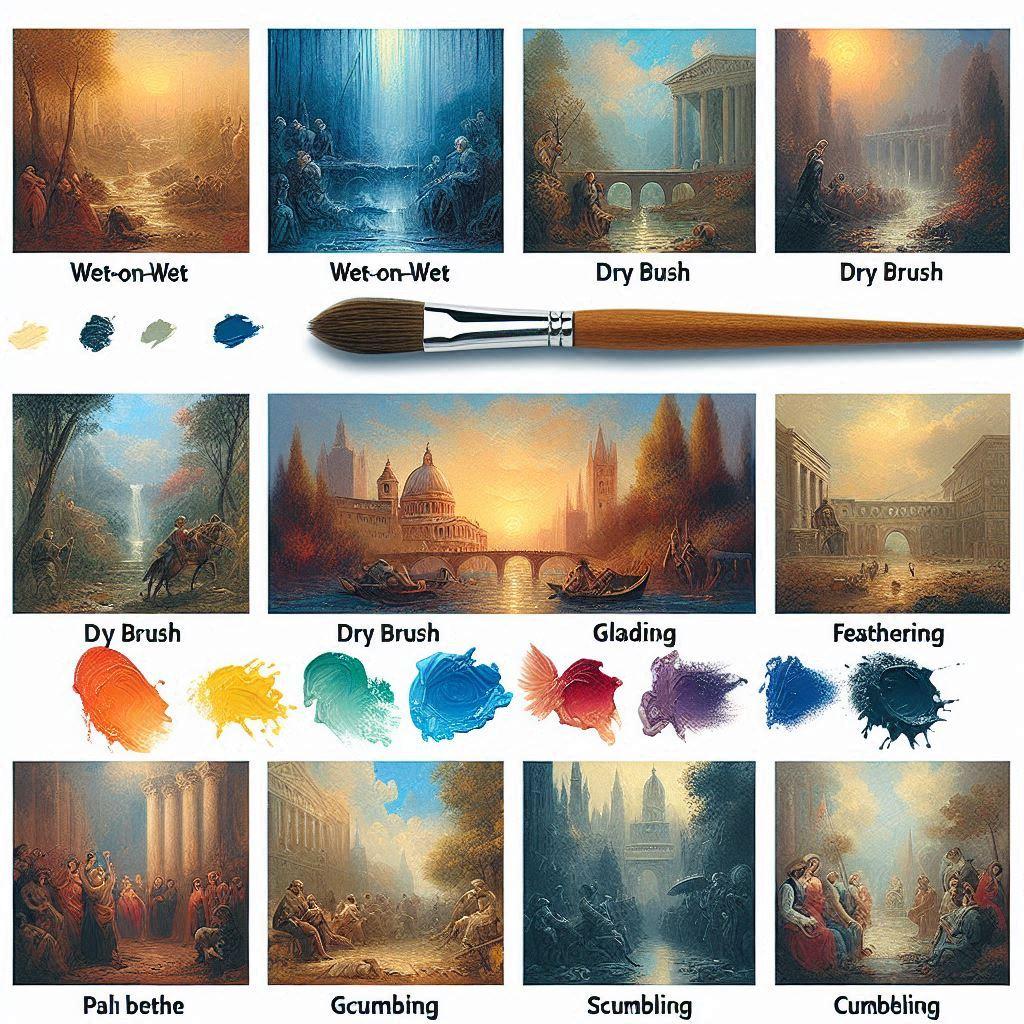The grisaille painting technique is one of the most powerful skills any artist can master. This classical method uses only shades of gray to create stunning artwork that captures light, shadow, and form with incredible precision. Whether you’re just starting your artistic journey or looking to improve your painting skills, understanding grisaille will transform how you see and create art.
Key Points Summary
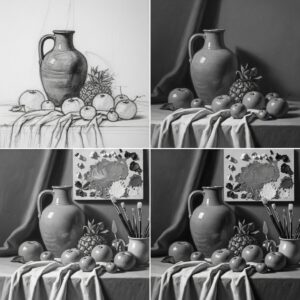
- Grisaille is a monochromatic painting technique using only gray tones
- Originally developed during the Renaissance as an underpainting method
- Helps artists master value relationships and light-shadow dynamics
- Can be created with oil paints, acrylics, or even watercolors
- Essential for developing strong foundational painting skills
- Used by master artists like Rubens, Rembrandt, and contemporary painters today
Understanding the Grisaille Painting Technique
The word “grisaille” comes from the French word “gris,” meaning gray. This traditional painting method involves creating artwork using only gray tones, from pure white to deep black. Think of it as painting in black and white, but with all the beautiful gray shades in between.
Many famous artists throughout history used this technique as a foundation for their masterpieces. Renaissance painters like Peter Paul Rubens and Diego Velázquez relied heavily on grisaille underpainting to establish strong value relationships before adding color.
The beauty of grisaille lies in its simplicity. Without the distraction of color, artists can focus entirely on:
- Light and shadow relationships
- Three-dimensional form
- Composition and design
- Texture and surface quality
Historical Origins and Famous Practitioners
The grisaille technique has deep roots in classical art training. During the Renaissance period, artists discovered that starting with a monochromatic underpainting created stronger, more unified final paintings.
Master painters like Rembrandt van Rijn used grisaille as the foundation for many of his portraits. His ability to capture dramatic light effects came from his mastery of tonal values established through monochromatic studies.
“Color is my day-long obsession, joy and torment. But it is only when values are correct that color truly comes alive.”
Claude Monet
Even Impressionist masters understood the importance of value relationships that grisaille teaches. Modern artists continue this tradition, using grisaille studies to plan complex compositions and solve lighting problems before introducing color.
Essential Materials for Grisaille Painting
Getting started with the grisaille painting technique requires surprisingly few materials. Here’s what you’ll need:
Basic Paint Colors
| Color | Purpose | Mixing Ratio |
|---|---|---|
| Titanium White | Highlights and light tones | 60% of mixture |
| Ivory Black | Deep shadows | 20% of mixture |
| Raw Umber | Warm middle tones | 20% of mixture |
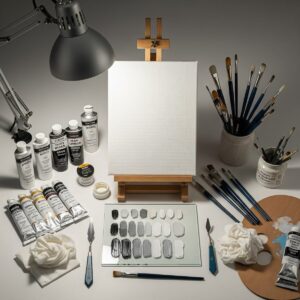
Brushes and Tools
- Flat bristle brushes (sizes 4, 6, 8)
- Round detail brushes (sizes 2, 4)
- Palette knife for mixing
- Canvas or painting surface
- Quality painting supplies make a significant difference
Optional Additions
For those wanting to expand their grisaille palette, consider adding:
- Ultramarine blue (for cool shadows)
- Yellow ochre (for warm highlights)
- Refined linseed oil (as medium)
Step-by-Step Grisaille Painting Process
Learning the grisaille painting technique follows a logical progression that builds skills systematically:
Step 1: Initial Drawing
Start with a light pencil sketch on your canvas. Keep it simple – focus on basic shapes and proportions. This foundation guides your painting without overwhelming the process.
Step 2: Block In Major Shadows
Using a mixture of raw umber and ivory black, establish the darkest shadow areas. Don’t worry about details yet – think of painting simple shapes of darkness.
Step 3: Establish Middle Tones
Mix various gray tones by combining white with your dark mixture. Paint the areas that aren’t pure highlight or deep shadow. This step builds the form’s structure.
Step 4: Add Highlights
Using titanium white mixed with just a touch of your gray mixture, carefully place your brightest highlights. These should be saved for the most important light-catching surfaces.
Step 5: Refine and Detail
Gradually refine the transitions between light and dark areas. Add texture, subtle details, and smooth gradations where needed.
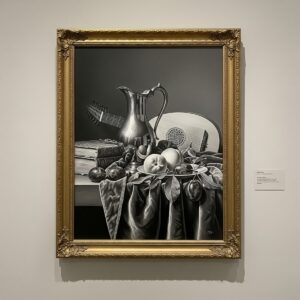
Benefits of Learning Grisaille Technique
Mastering the grisaille painting technique offers numerous advantages for artists at any level:
Improved Value Understanding: Working without color forces you to see value relationships clearly. This skill translates directly to better color mixing and more convincing paintings.
Stronger Compositions: Grisaille studies help identify composition problems early. You can adjust elements without wasting time on complex color work.
Faster Skill Development: Students who practice grisaille often improve their painting abilities more quickly than those who jump straight into full color work.
Professional Foundation: Many contemporary artists still use grisaille underpainting for commissioned portraits and complex compositions.
Common Mistakes and How to Avoid Them
Even experienced artists encounter challenges when learning the grisaille painting technique:
Mistake 1: Not Using Enough Value Range
Problem: Paintings look flat and gray Solution: Push your darks darker and keep some areas truly white. Use the full value scale from black to white.
Mistake 2: Overworking Transitions
Problem: Muddy, overblended surfaces Solution: Leave some brush strokes visible. Not every transition needs to be perfectly smooth.
Mistake 3: Ignoring Temperature Variation
Problem: Monotonous gray appearance Solution: Vary your gray mixtures slightly – some warmer (add raw umber), some cooler (add ultramarine blue).
Modern Applications of Grisaille
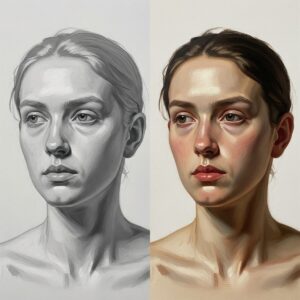
Today’s artists use the grisaille painting technique in various innovative ways:
Digital Art: Many digital artists create grisaille studies before adding color layers. Programs like Photoshop make this process incredibly efficient.
Portrait Painting: Professional portrait artists often complete entire grisaille underpaintings before glazing transparent colors over them.
Concept Art: Entertainment industry artists use grisaille to quickly establish lighting and mood in concept designs.
Fine Art Training: Modern art education still emphasizes grisaille as a fundamental skill.
Advanced Grisaille Techniques
Once you’ve mastered basic grisaille painting technique, try these advanced approaches:
Colored Grisaille
Instead of pure grays, use a dominant color temperature. Warm grisaille uses raw umber and white, while cool grisaille incorporates ultramarine blue.
Transparent Grisaille
Paint your grisaille study, then apply transparent color glazes over it. This traditional method creates luminous, professional-quality paintings.
Combined Methods
Many artists combine grisaille underpainting with alla prima techniques for specific areas, creating varied surface qualities within one painting.
Video Tutorial Resource
For visual learners, this comprehensive tutorial demonstrates professional grisaille techniques:
Frequently Asked Questions

What is the difference between grisaille and monochrome painting?
Grisaille specifically refers to painting in gray tones, while monochrome painting can use any single color. Grisaille is a type of monochrome painting, but not all monochrome work is grisaille.
How long does grisaille underpainting take to dry?
With oil paints, grisaille underpainting typically takes 24-48 hours to dry enough for color application. Acrylic grisaille dries much faster, usually within hours.
Can you do grisaille with acrylic paint?
Absolutely! Acrylic paints work excellently for grisaille technique. They dry faster than oils, making them perfect for students and quick studies.
What brushes are best for grisaille technique?
Flat bristle brushes work best for blocking in areas, while round brushes handle details and blending. Natural bristles hold more paint and create better textures than synthetic brushes.
Why do artists use grisaille before color?
Grisaille establishes correct value relationships and solves composition problems before adding the complexity of color. It creates a strong foundation that makes the final painting more successful.
Is grisaille good for portrait painting?
Yes! Grisaille is excellent for portrait painting because it helps artists focus on facial structure, lighting, and likeness without color distractions.
Conclusion
The grisaille painting technique remains one of the most valuable skills any artist can develop. This time-tested method teaches essential concepts about light, form, and composition while building confidence with paint handling. Whether you’re interested in classical realism or contemporary approaches, grisaille provides a solid foundation for artistic growth.
Start with simple subjects like still life objects or basic geometric forms. Practice mixing smooth gradations of gray, and don’t be afraid to push your darkest darks and brightest lights. Remember that mastering the grisaille painting technique takes time and patience, but the skills you develop will enhance every painting you create for years to come.
Ready to begin your grisaille journey? Gather your materials, find good lighting, and start exploring the beautiful world of monochromatic painting. Your future colorful masterpieces will thank you for this essential foundation.
For more painting techniques and artistic inspiration, explore our comprehensive guides on watercolor basics, oil painting fundamentals, and classical art methods.
External Resources:



